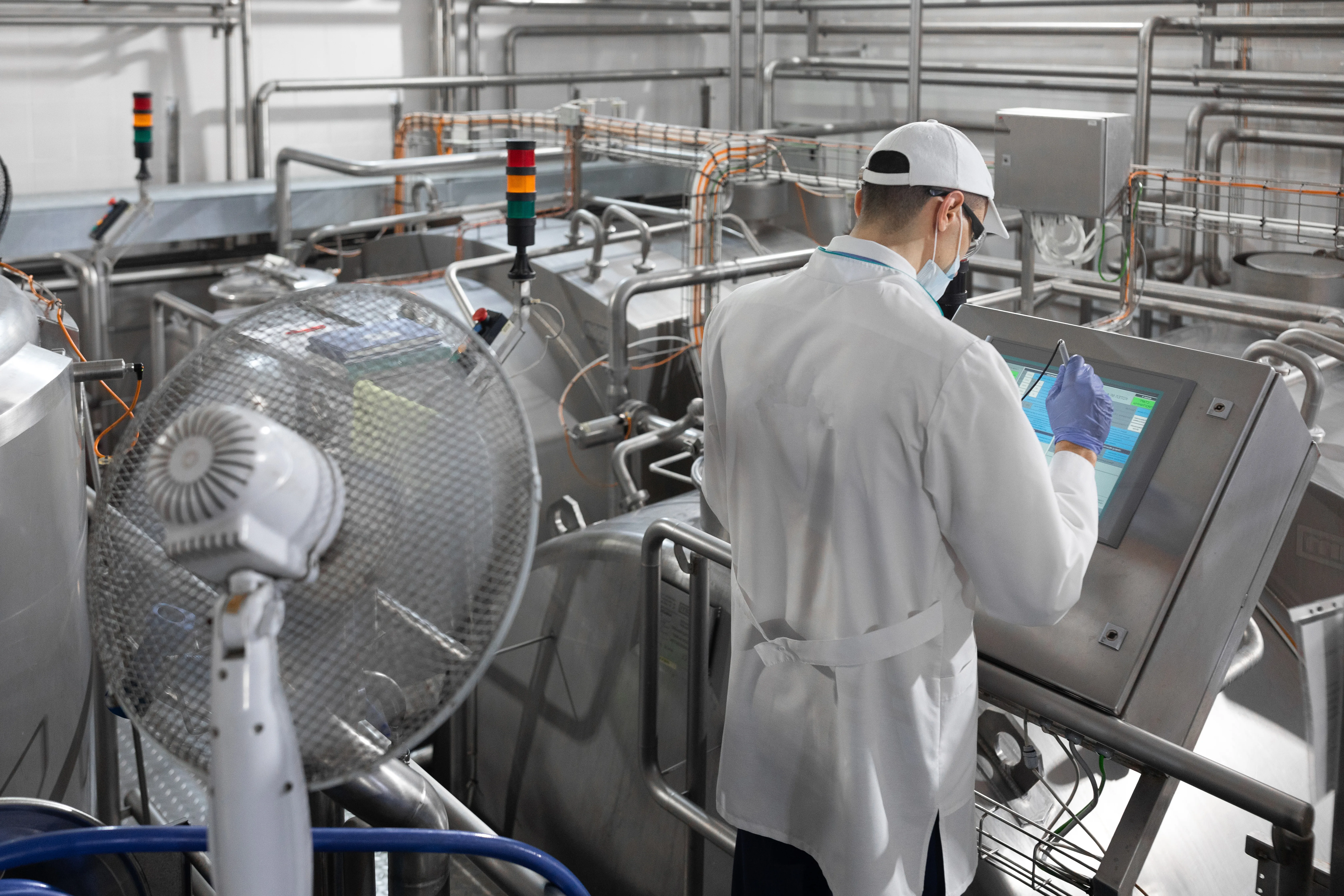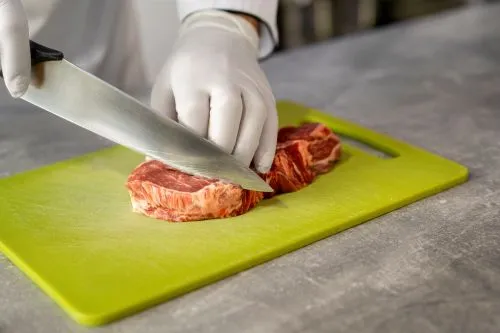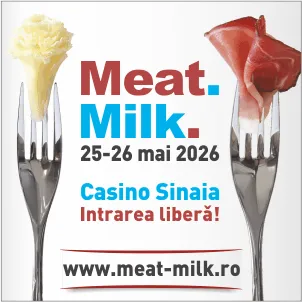
The Romanian Meat and Dairy Sectors: Current Status and Medium-Term Outlook
Romania’s meat and dairy sectors are undergoing major shifts for a variety of reasons. What is their current situation, and what lies ahead for these key agricultural industries? Here is an in-depth analysis based on the most reliable sources.
The European Landscape
In 2024, meat production in the European Union reflected mixed trends depending on species and product type. According to data from the Food and Agriculture Organization (FAO), pork production saw a slight decline compared to previous years, impacted by African Swine Fever and fluctuating global demand.
In contrast, poultry meat production continued to rise, driven by lower production costs and increasing consumer preference for chicken, which is perceived as healthier. Beef production remained relatively stable, although concerns about environmental impact and animal welfare have led to changes in farming practices and shifts in consumer demand.
As for processed meat products, the European industry has continued to diversify in response to evolving market demands. Eurostat data shows a rise in packaged meat production, reflecting consumer trends toward convenient, ready-to-cook options.
The cold cuts segment maintained steady demand, especially for traditional products and those with protected geographical indication. Additionally, the ready meal category—including meat-based dishes—expanded in response to increasingly fast-paced lifestyles and the growing need for quick meal solutions.
Looking ahead to 2025–2030, EU meat production is expected to evolve under the influence of several key factors. The European Commission projects that pork production may stagnate or decline slightly due to ongoing animal health concerns and changing consumer preferences.
On the other hand, poultry production is forecast to continue growing due to its efficiency and positive public perception. Beef production could face challenges related to sustainability and waning demand, although EU-backed initiatives promoting sustainable farming may help stabilize the sector.
Processed meat products are expected to maintain their trajectory toward convenience and premium quality. Industry players will need to respond to increasingly stringent consumer demands for transparency, sustainability, and animal welfare. Innovations in packaging, product development, and regulatory compliance will be crucial to ensuring the sector’s success in the coming years.
Meat Production in Romania
In Romania, the meat and meat products sector saw significant developments in 2024, influenced by economic factors, agricultural policies, and consumer preferences.
Pork production faced challenges stemming from African Swine Fever, resulting in decreased domestic output. To meet internal demand, Romania resorted to imports from other EU countries, particularly Germany and Spain.
In contrast, poultry production grew, driven by investments in farm modernization and alignment with European standards. Supported by the Common Agricultural Policy, Romanian producers expanded their capacity and improved product quality. Romanian poultry meat also gained traction abroad, with exports increasing to markets such as Italy and Greece.
Beef production remained relatively stable, though shifting consumer preferences toward healthier and more sustainable products had an impact. In response, Romanian farmers began adopting more environmentally friendly practices, supported by EU funding schemes.
The processed meat industry also diversified. Packaged meat production increased, reflecting consumer demand for convenient, easy-to-cook products. The cold cuts sector maintained steady demand, particularly for traditional items such as the PGI-certified “Salinate de Turda” and the already iconic “Salam de Sibiu.” The ready meal segment, including meat-based meals, expanded in line with modern lifestyles and growing demand for quick meal options.
Consumption Trends
In 2024, Romania’s cold cuts industry saw notable changes. Market data indicates the value of processed meat products rose to USD 1.3 billion, although this increase was primarily price-driven, with sales volumes remaining relatively flat.
Romanian consumers spent an estimated RON 4.3 billion annually on cold cuts, a figure that has grown in recent years. In the first half of 2024, research firm Market Vector reported a slight increase in consumer spending on these products. However, sales volumes dropped by 4.4% year-on-year, suggesting that rising prices led consumers to purchase smaller quantities.
Consumer preferences reveal that 55% of urban shoppers opted for packaged baton-style products, while 44% preferred sliced bulk cold cuts. Additionally, 2 out of 10 urban cold cut consumers regularly purchased unsliced baton-style items.
In the first four months of 2024, Romania imported meat and meat products worth EUR 599 million, according to the National Institute of Statistics.
In summary, while Romania’s cold cuts market experienced value growth in 2024, consumption volume slightly declined, reflecting shifting consumer behavior amid rising prices.
What Lies Ahead?
Looking ahead to 2025–2030, Romania’s meat production is expected to evolve in response to several factors. Pork production may stagnate or decline slightly due to animal health concerns and shifting consumer preferences.
Conversely, poultry production is likely to continue its upward trajectory, thanks to production efficiency and positive consumer perceptions. Beef production may face sustainability challenges and declining demand, but efforts to promote sustainable farming could help stabilize the sector.
Processed meat products are projected to continue trending toward convenience and premium quality. The industry will need to adapt to rising consumer expectations for transparency, sustainability, and animal welfare. Innovation in packaging, product development, and compliance with European regulations will be key to future growth.
What Is the Role of Private Label Products?
In Romania, private label products (retailers’ own brands) have gained a significant foothold in the food sector, including in the meat category. While specific data on private label market share in meat products is not publicly available, several general trends are worth noting:
- Private label share in food retail: Private labels accounted for 20% of sales in hypermarkets across Romania in 2024.
- Retailer strategies: Retailers such as Lidl heavily rely on private label products.
- Local sourcing: In Auchan’s stores, 90% of food products are supplied by Romanian companies, with over 85% of suppliers being local, including ultra-local producers.
Given these trends, it is clear that private label products hold a significant share of Romania’s food retail market. However, without specific data on meat products, their exact market share versus national brands remains uncertain.
The Transformation of the Dairy Sector
Romania’s milk and dairy market has undergone significant transformations in recent years, shaped by domestic production, imports, and exports. According to available data, Romania’s milk production falls into three main categories: milk for processing, milk for direct sale, and milk for on-farm technical use.
Each year, Romania produces around 1.2 million tonnes of milk for processing, 2 million tonnes for direct sales, and 1 million tonnes for on-farm use.
Imports play a major role in meeting domestic demand. Imported dairy products account for 60% of total consumption, placing Romania among the top milk-consuming countries in Europe per capita—exceeding Germany, Austria, Poland, and Spain.
Romania imports approximately 220 million liters of milk annually. Key imports and countries of origin include:
- Raw milk: 32,500 tonnes/month, mainly from Hungary (45%), Bulgaria (30%), and Poland (15%)
- Drinking milk: 18,600 tonnes/month, primarily from Germany (35%), Hungary (25%), and Slovakia (20%)
- Butter: 4,800 tonnes/month, sourced from Poland (40%), Germany (30%), and France (15%)
- Cheese: 7,200 tonnes/month, from Germany (25%), Italy (20%), and Greece (15%)
- Yogurt: 5,300 tonnes/month, primarily from Germany (30%), Bulgaria (25%), and France (15%)
Romania’s dairy exports remain limited compared to imports, reflecting a trade deficit in this sector. While detailed export data is scarce, it is clear that domestic production is not sufficient to meet internal demand, resulting in a high reliance on imports.
Addressing this imbalance will require investments in expanding domestic production capacity and improving process efficiency to reduce dependency on imports and strengthen Romania’s position in the European dairy market.
What Does the Milk Market Observatory Say?
According to the EU Milk Market Observatory (MMO), Romania’s milk production has fluctuated in recent years. In the first six months of 2024, the volume of cow’s milk collected by processing units increased by 3.7% compared to the same period in 2023.
Raw milk imports also surged. In June 2024, imports nearly doubled versus June 2023. Overall, in the first half of 2024, processing units imported 50% more milk compared to the same period the previous year.
Among dairy products, butter production saw the largest increase: up 9.3% in the first ten months of 2024, from 8,447 tonnes in 2023 to 9,230 tonnes in 2024.
What About CLAL?
The CLAL.it dairy market platform also confirms significant shifts in Romania’s dairy sector. Annual milk production is estimated at around 4.5 million tonnes. Factors such as weather conditions, farm size, and agricultural policy affect production volumes. Most Romanian farms are small to medium-sized, which can limit efficiency and investment in modern technology.
Imports continue to rise, especially from Hungary, Poland, and the Czech Republic. Cheese, butter, and yogurt imports reflect the growing diversity of Romanian consumer tastes and preferences for international brands.
On the export side, Romania mainly ships cheese and powdered milk to neighboring countries and the Middle East. However, export volumes remain modest, indicating untapped potential in this area.
Product Category Breakdown:
- Drinking milk: Domestic production covers a significant share of local demand, though UHT and premium varieties are largely imported.
- Cheese: Romania produces a range of traditional cheeses, but imports of matured and specialty cheeses from France, Italy, and Germany are increasing.
- Butter: Local production is supplemented by imports from Western Europe to meet domestic needs.
- Yogurt and fermented products: Both domestic production and imports are growing in response to strong consumer interest.
Private Labels in Dairy
Private label products in Romania now account for 18.5% of the overall fast-moving consumer goods (FMCG) market, according to a recent Nielsen market study. While no precise figures are available for dairy products alone, private labels by large retail chains are playing an increasingly prominent role in this segment.
To reduce the trade deficit in dairy, Romania must boost the competitiveness of local producers through investment in modern technology, improved product quality, and greater responsiveness to evolving consumer preferences. (Photo:Freepik)





